Flat organizational structure - how we evolved and why
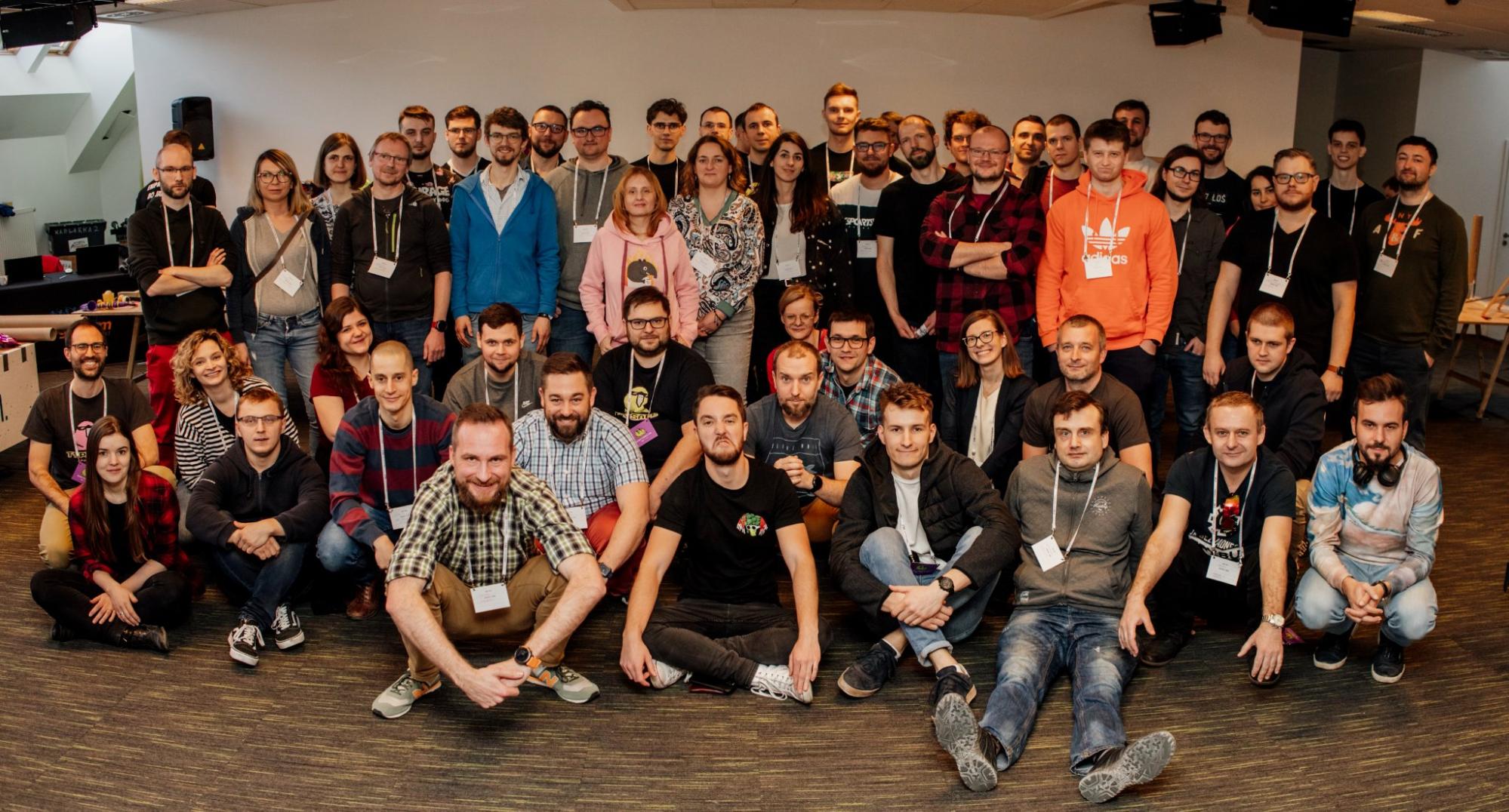
Evolving from flat structure - our story
In 2013 (almost 10 years ago!), our company founders decided to change SoftwareMill’s organizational structure to a flat one. These were the times when microservices were at their development beginnings, perceived by the software engineering world as something new and revolutionary.
Many successful microservices projects later, we grew our team to over 80 awesome SoftwareMillers, yet we’re no longer eligible to call ourselves a flat company. Is that good or is that bad? What kind of lessons did we learn through so many years of having a flat organizational structure? How do we operate now, as we plan to successfully grow our team even further?
In this article, you’ll get the answers!
What are the 4 types of organizational structures?
Let’s start with the basics. We can distinguish 4 most common types of organizational structures nowadays. Each of them has got their pros and cons. Take a look!
Functional organizational structure
This approach seems to be the most popular one - at least for now! It calls for grouping together people who do similar tasks based on their area of specialty. Managers lead each area and report to a director or executive who may oversee multiple departments.
Divisional organizational structure
In this type of structure, people gather around the product/service they deliver. For example, at Alphabet, there are separate divisions such as Alphabet's Access division (includes Google Fiber), Google's hardware division, and Google Cloud.
Matrix organizational structure
A matrix structure is a hybrid of the functional and divisional structures. It may involve employees reporting to different bosses depending on the project they’re currently working on. For example, a frontend designer is working for a client, yet sometimes someone from the company's marketing department requests their help. In this case, he/she reports to multiple bosses. The matrix structure requires a great deal of planning but can allow for the creation of the best possible teams to tackle the biggest challenges.
Flat organizational structure
We’re finally getting to the organizational structure that we at SoftwareMill had been using for so many years before. Let’s state one thing clearly from the very beginning - flat organization structure doesn’t mean that there is no hierarchy at all. That would cause complete chaos, which no organization wants - especially if you’re building such complex software systems as we do.
You need to know who has ownership for each field inside your company to plan for the future and feel secure that nothing gets neglected. So we always had some form of hierarchy, yet instead of having it imposed by our CEO, we’ve built it bottom-up inside our teams.
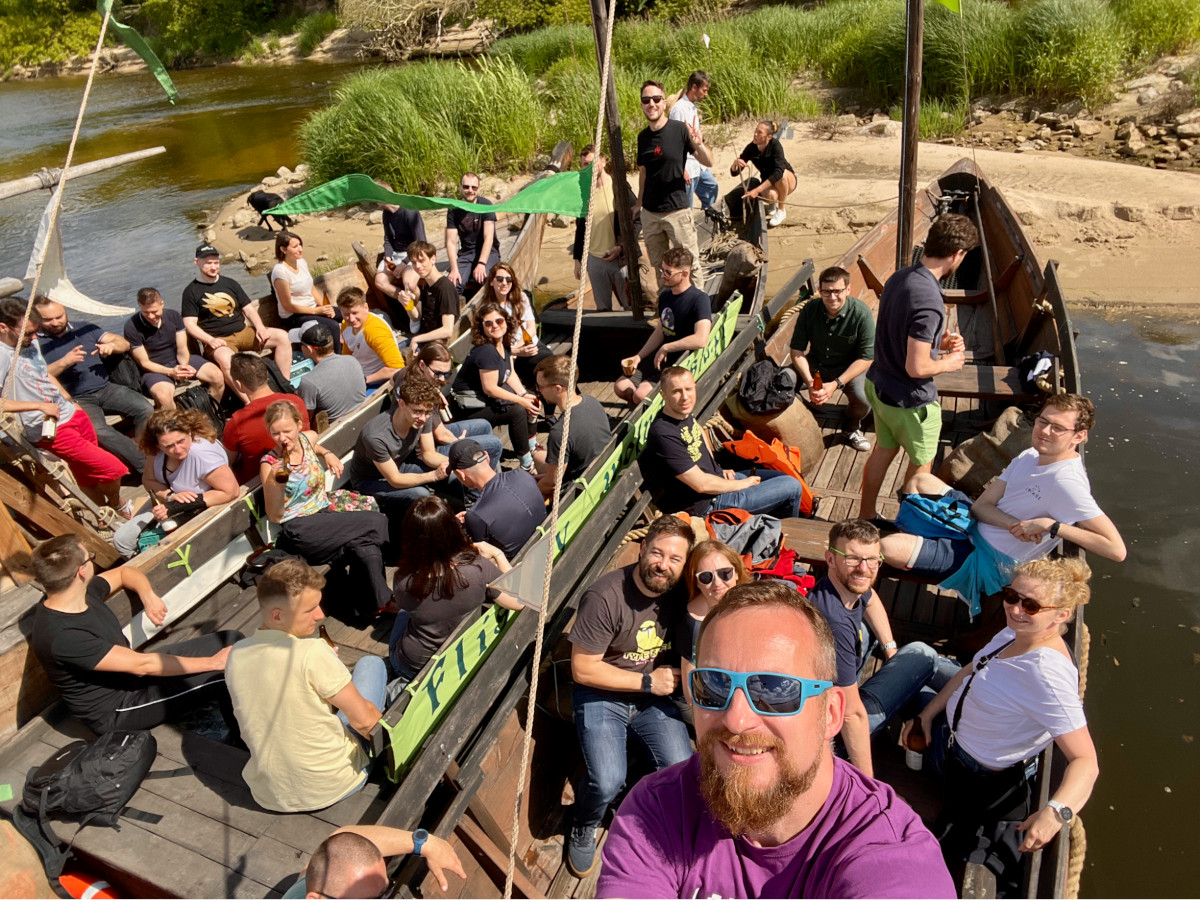
Our team integration boat cruise in Toruń
Another thing that distinguishes flat organizations is the lack of middle management. By eliminating the overblown hierarchical structure, you strengthen the feeling of personal responsibility for company success among your team members. That’s why for so many years, we said that we are a company where everyone is a CEO.
At SoftwareMill, you will never hear that your idea or perspective is invalid, based on your years of experience, the title you hold or time that you work with us. And this is definitely something rooted so strongly in our company culture that we’ll keep it - no matter the specific type of structure we’re currently operating with.
What company has a flat organizational structure?
The most recognizable example of a company that operates with a flat organizational structure is Valve. This game development studio is responsible for releasing the Half-Life series, Dota 2, Portal, and lots more!
Valve is a flat company without a management hierarchy or traditional boss roles: instead of hierarchical organizational structure and middle management, Valve employees are free to work on whatever projects they choose and to convince other employees to join collaborative groups. Decision-making is thus “democratized” rather than centralized in key management positions.
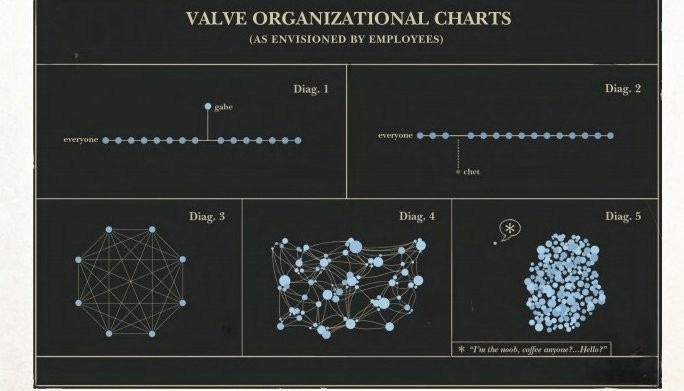
Screen from Valve New Employees Handbook presenting their flat organizational structures
Throughout the years of operating as a flat organization, Valve has encountered lots of controversies. Some of the people claimed that the company's flat management structure has very serious flaws, others admired the level of independence the company gives to its team members. Nevertheless, as of 2022, Valve employees still call their organization flat - you can read more about this here on Reddit.
What is the advantage of a flat organizational structure - based on our SoftwareMill example?
The advantage of a flat organizational structure is a lot more freedom for employees, which requires a group of self-starters who don’t need managers checking up daily on their work. It also requires a lot of maturity and a feeling of personal responsibility for the company's success from the team members - in return, they receive lots of autonomy, trust, and endless growth opportunities.
Our main idea when following the steps of other flat organizations was to make all decisions as close to the source of the problem as possible. By introducing full transparency (including remuneration and client rates), project teams could make independent decisions based on a full picture of the situation. For larger initiatives, we created Working Groups and democratic votes of the entire company on the proposal developed in a given Group. This management model worked well for us for a good few years.
As we see from our example, the flat organizational structure brought us benefits such as:
- higher engagement of team members,
- higher team retention,
- knowledge transfer within the organization,
- access to top talents,
- and great influence on shaping our company's unique culture.
That’s why lots of the flat structure characteristics, such as previously mentioned transparency, making big company decisions together,and team members' self-organization are here to stay, even though we’ve introduced some amendments.
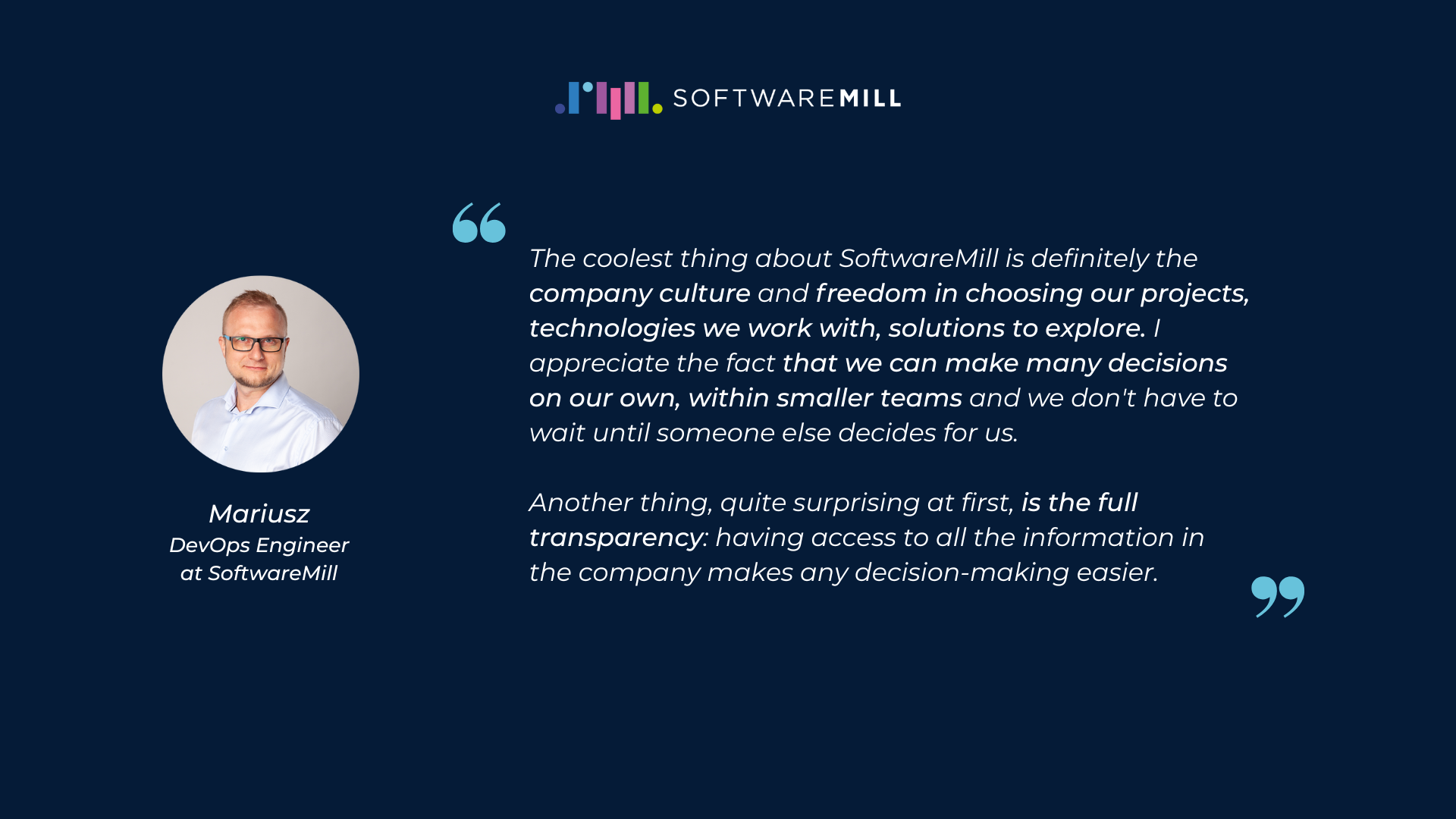
One of our team members’ opinion on our company culture
You can read more about how it feels to be a SoftwareMiller here!
Why did we move from a flat organizational structure to holacracy?
Time went by and, as a result of our dynamic growth, we came to the point when we exceeded 50 people in our team. That was the moment when we started to notice that a flat structure has its limitations. It turned out that not everyone in such a large team is always interested in making company decisions, which usually requires quite some time and effort to get to know the context of the situation. Whole-company votes turned into a long decision-making process and lacked its previous dynamic.
Looking for inspiration for change, we came across the idea of holacracy. Based on this, we selected Guilds (equivalents of holacracy Circles) that bring together a group of people with the best knowledge and competencies in a given area of the company's activity, e.g. Business Development or DevOps. They are also the ones who make faster and more creative decisions on their own. The self-organizing Guilds have chosen their leaders from the bottom up, through voting.
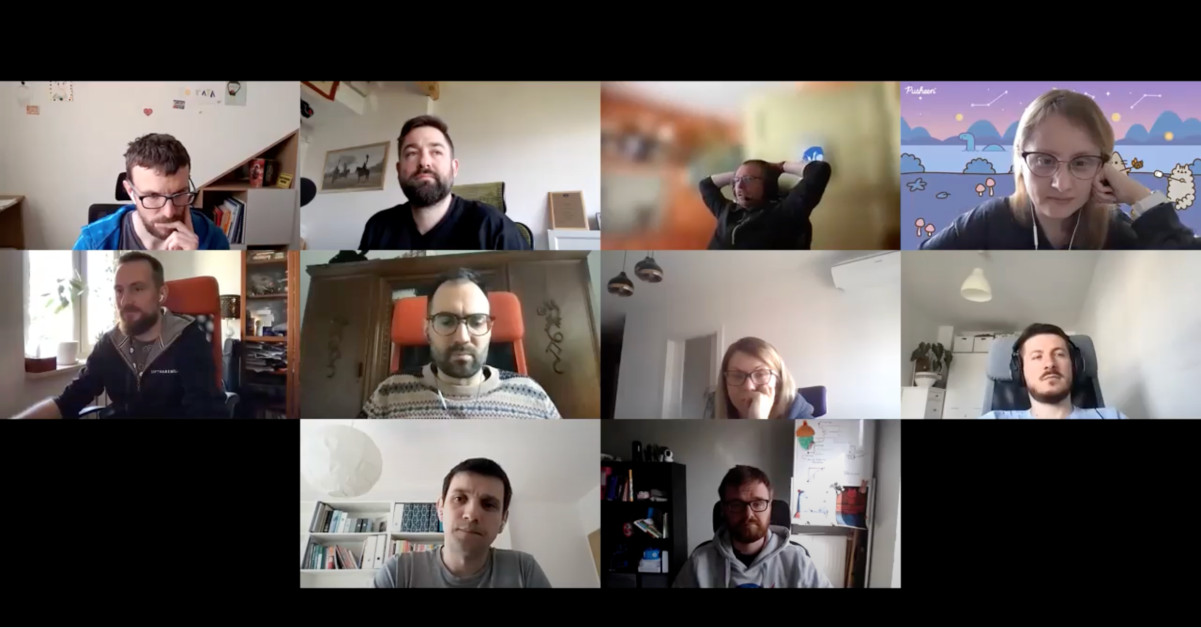
A screen from one of our Guild Masters biweekly meetings
Each Guild is led by a Guild Master who coordinates the team's activities. Every two weeks, the Guild Masters meet to discuss current activities as well as important steps for the development of SoftwareMill. We conduct the meetings democratically and openly. Anyone can join them or stay up to date by watching recordings or reading meeting notes.
The transformation from a teal organization to holacracy with full transparency gives everyone at SoftwareMill the opportunity to take responsibility for their area, but also to get involved in other roles and areas of the company. We still sometimes use Working Groups for new initiatives that go beyond the competence of one Guild.
Conclusion
To sum up - the flat organizational structure served us well for many years. Thanks to it, we’ve built a backbone of what SoftwareMill is today - a place where everyone has got a say in the overall company development, gathering the best, most engaged people you’ll ever meet, and focused around the idea of trust, where we never ever micromanage and where we keep all the most important info (remuneration included) open. Thanks to holacracy, we can both keep those values and grow, as everyone in the company knows that each strategic company aspect is taken care of by a specific Guild.
Want to read more about how our organization is operating today? We’ve recently updated our Handbook for New Employees that describes in detail what you can expect when joining our team. Download it here!